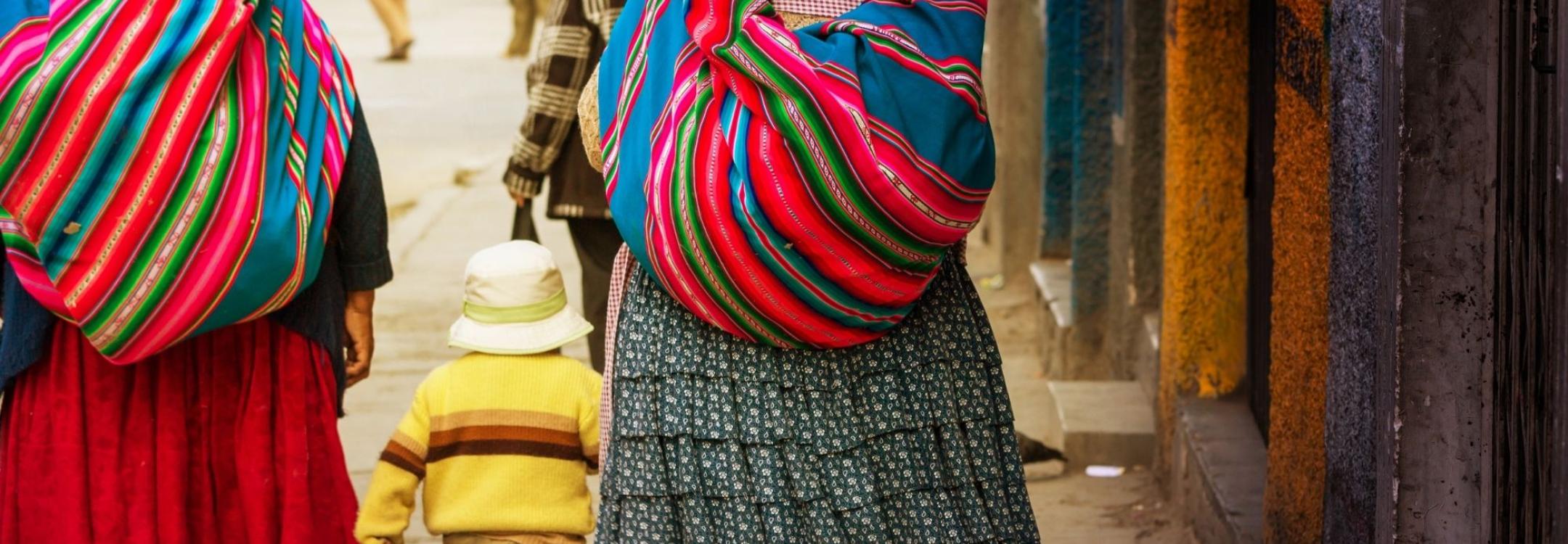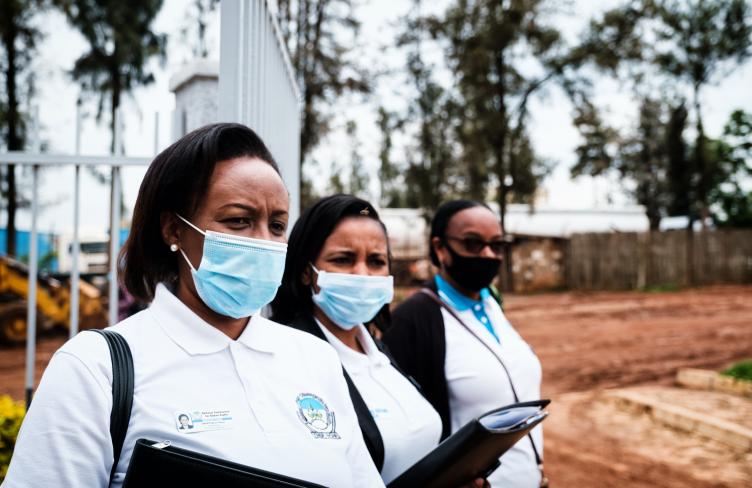
The COVID-19 pandemic has made visible a number of problems that have long been latent in Latin America, with the impacts felt by entire communities. However, even in the midst of the pandemic, one group continues remain virtually invisible: indigenous women deprived of liberty. As we mark the International Day of the Indigenous Peoples, it is important to reflect on the requirement of States to respect, protect and fulfil their rights, in both law and practice.
Ending the ‘invisibility’ of indigenous women deprived of liberty
One of the first difficulties to be addressed is the paucity of official data or reports on indigenous women deprived of their liberty. For example, in Colombia, the last report is from 2006 and it documents the situation and number of indigenous people deprived of liberty in general, but is not disaggregated by gender. And in the July 2021 report of the Instituto Nacional Penitenciario y Carcelario (INPEC), there are no data to record the number of indigenous women deprived of liberty. However, in Colombia there is a trend for women to be convicted for crimes related to public health – that is, drug trafficking. This group of women is often characterised by low levels of schooling, poverty and experiences of violence and abuse. Further, they are usually the most vulnerable link in the chain of drug trafficking networks.
Elsewhere in the region, Ecuador records its statistics based on women self-identifying as indigenous. However, many indigenous communities have been displaced from their territories, which can make self-identification difficult. As a result, only 59 women in the entire prison system are recognised as indigenous, with most being prosecuted for the crimes of abortion or drug trafficking. In Chile, indigenous women who migrate from Peru, Bolivia and Argentina, in order to survive or in search of opportunities, can be lured into criminality, especially crimes such as drug trafficking. As foreigners, they can face additional challenges on arrest, especially barriers in relation to language. Finally, in Mexico, indigenous women made up 5.19% of the prison population in 2014, being a minority with respect to the population deprived of liberty. These women are discriminated against for being indigenous and suffer high criminalisation for offences related to drug trafficking.
The absence of information on indigenous women deprived of their liberty, on the one hand, gives us a very limited overview of the guarantee of their rights in penitentiary establishments, the specific effects this produces in their communities, and the roles they exert within them. On the other hand, it reaffirms the structural violations that women face, which is a consequence of public policies that lack the gender and intersectional approach necessary to properly address complex social problems.
Towards genuine recognition of indigenous peoples’ rights in the criminal justice system
The factors that contribute to the criminalisation of indigenous women are not very different from the multiple types of violence – symbolic, direct and structural – faced by indigenous peoples in general in Latin America, despite being formally recognised in many countries. For example, in the Constitutions of Colombia, Bolivia and Ecuador, among others, multiculturalism, multinationality and multiculturalism have been the main postulates for the claim of autonomy and legitimacy of indigenous peoples.
In the case of Colombia, it has become evident that this recognition is only in appearance due to multiple and converging issues, such as the imposition of development projects, drug trafficking and armed conflict. The latter has led the authorities of indigenous peoples not to exercise their right to the administration of justice in their territory, due to the insecurity they perceive in the face of armed groups. Additionally, the state judicial system has established a discourse regarding the inability of indigenous peoples to adjudicate ‘serious crimes’ – ‘seriousness’ being a category defined by the West - such as those related to drug trafficking, because they are crimes against public health, or crimes of sexual violence. On the other hand, "minor" crimes do fall under indigenous jurisdiction.
It is important to emphasise that in the ordinary justice system, the punitive spirit prevails. Steps have not been taken to repair the damage, reestablish the social fabric and strike a durable balance with indigenous justice systems.
This inferiorisation and gaps in the asymmetries of power in the justice system is one of the reasons why indigenous women end up deprived of their liberty in prisons that deny and violate their rights, not only as women but also as members of indigenous communities. The lack of guarantees within prisons means that there is no genuine access to justice for indigenous women deprived of their liberty, since they are usually detained far from their territories, in border locations, which weakens their ties with their indigenous authorities, their community, their family and their territory. Likewise, they lack proper access to interpreters or anthropological expert opinions and their arrests are commonly carried out under the threat or practice of torture or ill-treatment.
It is paradoxical that the state judicial system discredits the ability of indigenous authorities to prosecute crimes committed by indigenous women when the same system reinforces gender violence. This is the case for indigenous women – as victims of crimes, such as sexual violence – who turn to the state system in search of justice but find themselves within a stigmatising system and confronting patriarchal procedures that only reproduce cycles of structural violence.
The reflections we offer here highlight the need to incorporate an intercultural and intersectional approach, not only in criminal policy but also in the formulation of social policy. This approach must address the different forms of violence faced by indigenous women, which for too long have resulted in the deprivation of liberty being yet another form of re-victimisation.
It is necessary that, in countries across the region, there is a material recognition of the autonomy of indigenous peoples, based on dialogue and an understanding of ‘other knowledge and justice’. This will allow us to begin to restore the social fabric and repair long-standing damage. It is also important to acknowledge that making constitutional recognition of indigenous peoples a reality is not limited only to the development of legislation but involves guaranteeing full participation and inclusion – in this case of indigenous women – in the decision-making processes from which they have historically been excluded.
Authors
